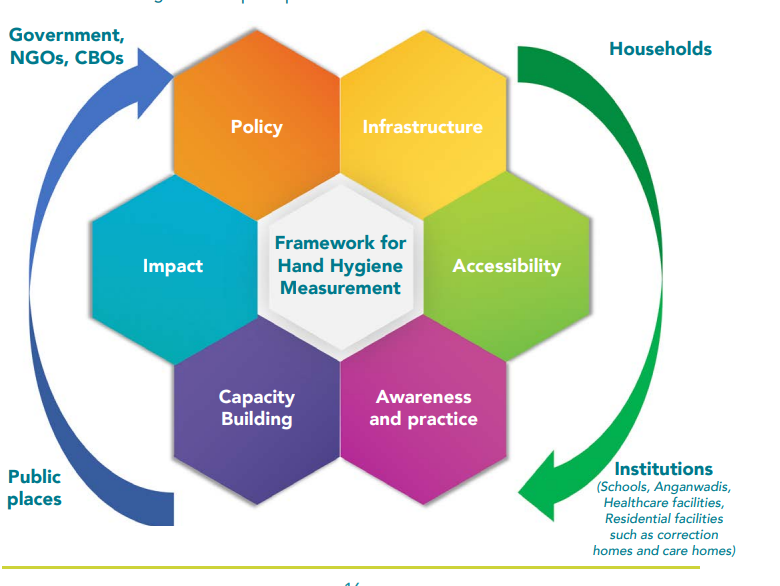Policy recommendations for national government and the state government of Odisha.
Published on: 27/10/2022
![]()
Cover illustration "Mapping Policies and Tracking Budgets for Hand Hygiene". Credit: Fountainhead Solutions Pvt. Ltd
There is a need to include and monitor hand hygiene in policies, programmes and budgets at both national and state level in India. Identifying a nodal ministry to lead hand hygiene would help fulfil this need. As would a comprehensive monitoring framework to measure hand hygiene. Another strategic action to achieve hand hygiene for all would be to invest in the five the key 'accelerators' identified under the UN-Water SDG 6 Global Acceleration Framework: (i) optimized financing; (ii) improved data and information; (3) capacity development; (iv) innovation and; (v) governance.
The above-mentioned recommendations come from two mapping studies written by Trisha Agarwala of the New Delhi-based Centre for Budget and Governance Accountability (CBGA) with support from IRC and UNICEF India. The first study maps national government hygiene policies. The second study focuses on the state of Odisha and has been validated by field research by the Centre for Youth and Social Development (CYSD). The mapping studies are based on a review of policies, programme guidelines and budgets of key national and Odisha state ministries representing the water, health, education, women and child development, and local government sectors.

Framework for monitoring and reporting hand hygiene in India. Credit: Shubho Broto Das (nudgeCatalyst.com)
IRC has acted on the recommendation to develop a comprehensive monitoring framework to measure hand hygiene. IRC staff have compiled such a framework with a focus on households, schools and health care centres. It is aimed at policy makers, implementors and citizens. The framework includes six categories of indicators: infrastructure; accessibility; awareness and practice; capacity building, policy; and impact. Per indicator the framework includes the frequency and method of data collection. It also highlights those indicators that are captured in existing management information systems (MIS) or in periodical government surveys.
The mapping studies and the framework were produced for the UNICEF supported project on "Assessing financial possibilities in existing schemes and capacity requirements for hygiene programming in India". Other project outputs include four policy briefs on commitment to hand hygiene promotion.